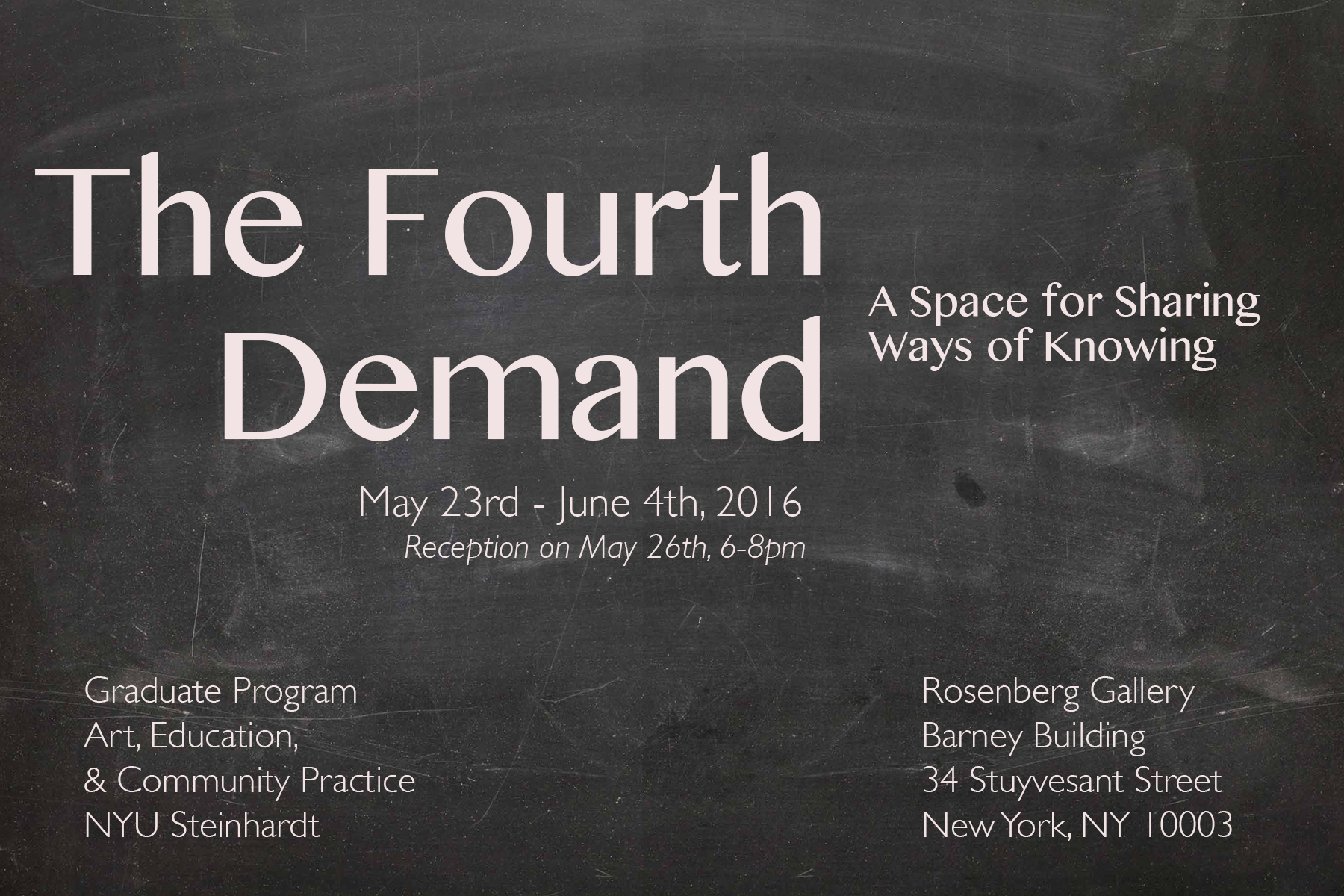The Fourth Demand
A Space for Sharing Knowledge
The Fourth Demand was an exhibition of the 2016 graduates of the Art, Education, & Community Practice Program at Steinhardt, NYU. In addition to the gallery space, we each held a teach-in related to the topic of our ongoing work.
Curatorial Statement:
Universities are sites for pedagogies that both reproduce hierarchies of power and also challenge hegemony to create more just ways of sharing knowledge. In 1969 Black and Puerto Rican students took over the New York City College campus to demand open admissions. With their “fourth demand,” as the action was termed by June Jordan, these students sought to include the voices of marginalized peoples inside the classroom. They fought to break down barriers between campus and community, and between elite privilege and local knowledge.
With this exhibition, we make a new demand to open up the private space of New York University to the public. We value the many kinds of knowing that surround the university and push the students, faculty, and administration for real political and economic action that shifts NYU’s relationship with publics locally and worldwide.
The six projects in this show respond to a long shadow of systemic displacement and isolation felt by many New Yorkers and globally marginalized communities. At the same time, we recognize the creative forms of survivance that people use to resist oppressive policies and thrive in our home cities.
From gentrification to child care, mental health to indigenous rights, community destruction to the exploitation of laborers, the issues our projects raise are staggering -- but so are the imaginative ways we can come together to break open cycles of oppression and reimagine the world around us.
-- Carol Cabrera, Emily Caruso, Noah Fuller, Federico Hewson, Erika Houle, Becky Neil, Sara Rubenson
This is the video I shot and edited to accompany the exhibition.
Questions posed by the projects:
- How do you find out about formative changes in your neighborhood?
- Whose hands touch a flower on its journey to you?
- How could we talk about mental illness?
- How can we preserve social programs, like child care, to support healthy families?
- How is your life intertwined with the lives of Indigenous people on other side of the world?
- What physical, emotional, fanatical fragments are below the grid as you walk, trudge, dance through the city?

